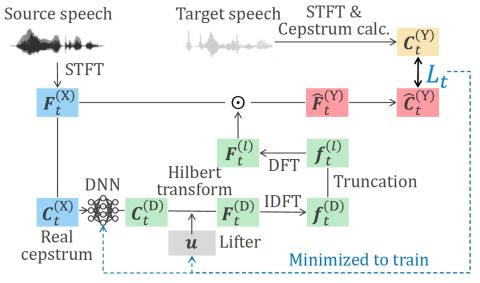In this paper, we propose computationally efficient and high-quality methods for statistical voice conversion (VC) with direct waveform modification based on spectral differentials. The conventional method with a minimum-phase filter achieves high-quality conversion but requires heavy computation in filtering. This is because the minimum phase using a fixed lifter of the Hilbert transform often results in a long-tap filter. One of our methods is a data-driven method for lifter training. Since this method takes filter truncation into account in training, it can shorten the tap length of the filter while preserving conversion accuracy. Our other method is sub-band processing for extending the conventional method from narrow-band (16 kHz) to full-band (48 kHz) VC, which can convert a full-band waveform with higher converted-speech quality. Experimental results indicate that 1) the proposed lifter-training method for narrow-band VC can shorten the tap length to 1/16 without degrading the converted-speech quality and 2) the proposed sub-band-processing method for full-band VC can improve the converted-speech quality than the conventional method.
Conclusion
We presented a lifter-training and sub-band-processing methods for computationally efficient and high-quality voice conversion based on spectral differentials. The lifter was trained considering filter truncation. The sub-band-processing method efficiently converted the lower frequency band of a full-band voice. The experimental results indicate the superiority of our methods in terms of computational efficiency, converted-speech quality compared to the conventional method. For future work, we will implement real-time VC using the proposed methods and evaluate its effectiveness in converted-speech quality and latency.

